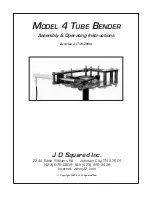
RP0169-2002
NACE International
3
Polarization: The change from the open-circuit potential as
a result of current across the electrode/electrolyte interface.
Polarized
Potential:
The
potential
across
the
structure/electrolyte interface that is the sum of the
corrosion potential and the cathodic polarization.
Reference Electrode:
An electrode whose open-circuit
potential
is
constant
under
similar
conditions
of
measurement, which is used for measuring the relative
potentials of other electrodes.
Reverse-Current Switch:
A device that prevents the
reversal of direct current through a metallic conductor.
Shielding: Preventing or diverting the cathodic protection
current from its intended path.
Shorted Pipeline Casing: A casing that is in direct metallic
contact with the carrier pipe.
Sound Engineering Practices:
Reasoning exhibited or
based on thorough knowledge and experience, logically
valid
and
having
technically
correct
premises
that
demonstrate good judgment or sense in the application of
science.
Stray Current:
Current through paths other than the
intended circuit.
Stray-Current Corrosion: Corrosion resulting from current
through paths other than the intended circuit, e.g., by any
extraneous current in the earth.
Telluric Current:
Current in the earth as a result of
geomagnetic fluctuations.
Voltage: An electromotive force or a difference in electrode
potentials expressed in volts.
Wire: A slender rod or filament of drawn metal. In practice,
the term is also used for smaller-gauge conductors (6 mm
2
[No. 10 AWG
(2)
] or smaller).
________________________________________________________________________
Section 3: Determination of Need for External Corrosion Control
3.1 Introduction
3.1.1 This
section
recommends
practices
for
determining when an underground or submerged
metallic piping system requires external corrosion
control.
3.1.2 Metallic structures, buried or submerged, are
subject to corrosion.
Adequate corrosion control
procedures should be adopted to ensure metal integrity
for safe and economical operation.
3.2 The need for external corrosion control should be
based on data obtained from one or more of the following:
corrosion surveys, operating records, visual observations,
test results from similar systems in similar environments, in-
line inspections, engineering and design specifications, and
operating, safety, and economic requirements.
The
absence of leaks alone is insufficient evidence that
corrosion control is not required.
3.2.1 Environmental and physical factors include the
following:
3.2.1.1 Corrosion rate of the particular metallic
piping system in a specific environment (see
Appendix B);
3.2.1.2 Nature of the product being transported,
the working temperature, temperature differentials
within the pipeline causing thermal expansion and
contraction, tendency of backfill to produce soil
stress, and working pressure of the piping system
as related to design specification;
3.2.1.3 Location of the piping system as related to
population density and frequency of visits by
personnel;
3.2.1.4 Location of the piping system as related to
other facilities; and
3.2.1.5 Stray current sources foreign to the
system.
3.2.2 Economic factors include the following:
3.2.2.1 Costs of maintaining the piping system in
service for its expected life (see Appendix B);
3.2.2.2 Contingent
costs
of
corrosion
(see
Appendix C); and
3.2.2.3 Costs of corrosion control (see Appendix
D).
___________________________
(2)
American Wire Gauge.
Содержание CP 1
Страница 1: ...CP 1 Cathodic Protection Tester Course Manual February 2005 NACE International 2000 ...
Страница 265: ......
Страница 266: ......
Страница 267: ......
Страница 268: ......
Страница 301: ...RP0169 2002 32 NACE International ISBN 1 57590 035 1 ...
Страница 535: ...TM0101 2001 24 NACE International ISBN 1 57590 137 4 ...
















































